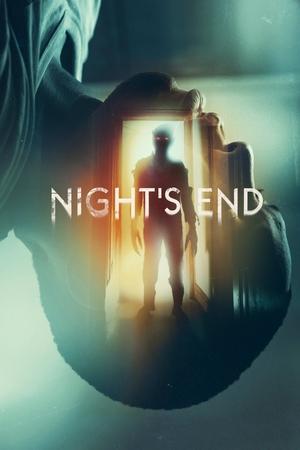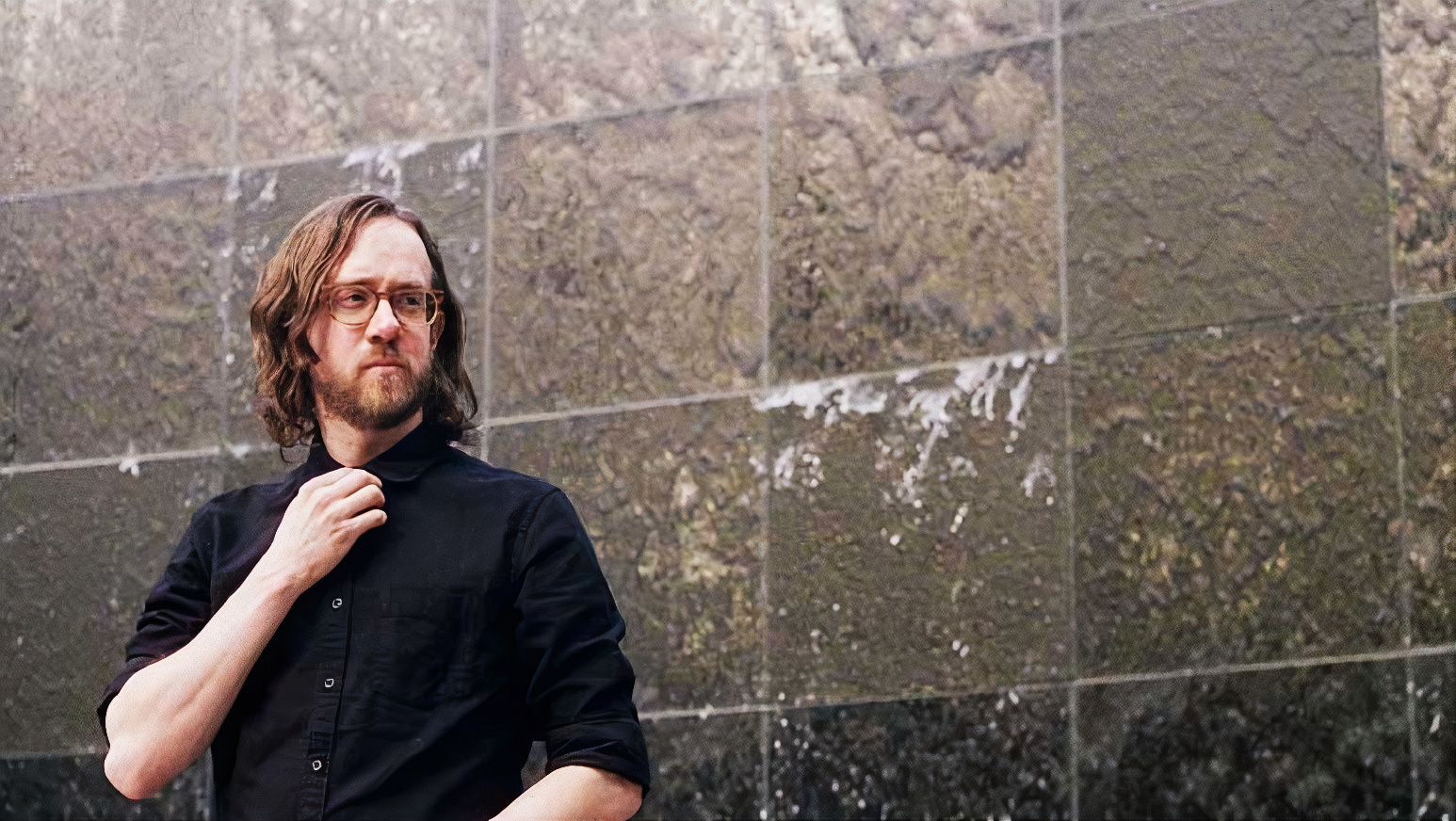We recently had the opportunity to speak with composer Casey J. Cooper, also known as CoastalDives, about his work on the score for Shudder’s latest film, Night’s End. In this exclusive interview, Cooper shares his insights and experiences in creating the haunting musical backdrop for this suspenseful horror movie.
 |
Night's End |
| Release: 2022-03-31Genre: HorrorDuration: 81 minsBudget: $ 0 | |
OverviewAn anxious shut-in unwittingly moves into a haunted apartment and hires a mysterious stranger to perform an exorcism which takes a horrific turn. |
The Plot of Night’s End
Night’s End follows the story of an anxious shut-in who moves into a haunted apartment and hires a stranger to perform an exorcism. However, things quickly take a horrific turn, leading to a chilling and terrifying ordeal. The film stars Geno Walker, Kate Arington, Michael Shannon, Isaac Dees, Felonious Munk, Daniel Kyri, and Theo Germaine.
What Attracted Cooper to the Night’s End Script?
Cooper reveals that he was drawn to the character of Ken, the lead, who embodies solitude and isolation. As the world had just experienced the COVID-19 pandemic, this resonated strongly with Cooper and many others who had grown accustomed to increased remote interactions through phones and computers. The prospect of providing a musical accompaniment to Ken’s lonely apartment setting, with slow and subtly evolving chords, textures, and colors, intrigued Cooper.
The Role of Script Reading in Cooper’s Creative Process
Cooper explains that when initially reading a script, he deliberately avoids thinking about the music. It is only after allowing the story to settle in his mind that he begins to contemplate the desired mood or theme. Taking note of generalized musical ideas, he ensures he verbalizes his intentions before diving into the composition process. By doing so, he captures his initial instincts and prevents losing track of the original vision.
Initial Discussions and Creative Direction for the Film Score
Cooper engaged in early discussions with director Jennifer Reeder soon after reading the script. Knowing he wanted to incorporate a synth-heavy sound with orchestral elements, Cooper aimed for a hybrid composition. He communicates his themes best through synthesizers, but by adding strings and other orchestral instruments, he could explore conventional dissonance and discomfort, which are crucial in creating the desired horror film atmosphere. Reeder, familiar with Cooper’s style, gave him the creative freedom to experiment and explore his musical ideas.
Finding Inspiration Without Watching Other Horror Films
Interestingly, Cooper decided not to watch other horror movies during most of the scoring process. His aim was to avoid sounding derivative and instead leave a unique musical imprint on Night’s End. While he acknowledges the presence of his influences, he wanted to compose in his own distinctive style, pushing the boundaries of dissonance while maintaining a careful balance. Toward the end of the film, he did draw inspiration from the haunting scores of Disasterpeace’s “It Follows” and Colin Stetson’s “Hereditary.”
Story Elements and Musical Reflections
Cooper identifies the theme of isolation as a significant element that influenced the musical tone throughout Night’s End. As the events in the film progress from bad to worse, the discomfort experienced by the characters becomes increasingly palpable through the music. Cooper also credits director Reeder’s deliberate pacing and the outstanding cinematography by Christopher Rejano for shaping the mood of the film and guiding his musical choices. The overall sadness and melancholic nature of the story aligned with Cooper’s musical sensibilities, creating a seamless fusion between the visuals and the score.
Character Themes and Musical Representation
One notable aspect of the score is the specific theme created for Ken’s morning routine, which intensifies as the film unfolds. Cooper took care to degrade the harmony of this theme gradually to mirror Ken’s deteriorating mental state. Through repetitive, slightly dissonant arpeggios layered over a simple chord progression, the music symbolizes the character’s descent into madness.
The Influence of the Setting on the Score
Given that the majority of Night’s End takes place in Ken’s apartment, the setting played a crucial role in Cooper’s work. By employing slight variations on repeated musical themes, he accentuated the different scenes within the apartment. The use of altered melodic and harmonic ideas provided continuity and cohesion, allowing the score to tie various moments together.
Cooper’s Journey into Film Composition
Cooper’s involvement in film composition began when director Jennifer Reeder approached him after witnessing his band’s performance. Intrigued by the possibility, he collaborated with Reeder on one of her early short films and discovered a natural synergy between their styles. Since then, he has continued to compose for Reeder as well as other directors and artists, further fueling his love for the craft.
Influential Horror Film Scores of the Past Year
One horror film score that captivated Cooper in the past year was Ben Lovett’s work on “The Night House.” As the story unfolds, Lovett’s score masterfully transforms moments of terror into a sad and relatable tragedy. The music seamlessly transitions between beautiful and atonal compositions, perfectly complementing the film’s disturbing themes and leaving a lasting impact on Cooper.
Conclusion
With Night’s End, composer Casey J. Cooper (CoastalDives) has once again demonstrated his exceptional talent in crafting atmospheric and evocative scores. His ability to capture the emotions and intricacies of the film’s narrative through music is commendable. As viewers embark on a journey into the haunted apartment alongside the characters, Cooper’s score enhances the tension, isolation, and looming dread, making Night’s End an unforgettable cinematic experience.
Frequently Asked Questions (FAQs)
1. How long did it take Casey J. Cooper to compose the score for Night’s End?
Cooper dedicated several weeks to composing the score for Night’s End. This timeframe allowed him to fully immerse himself in the story and create a musical composition that genuinely reflected the film’s atmosphere and core themes.
2. What were the major challenges in creating a unique musical identity for Night’s End?
One of the primary challenges Cooper faced was balancing the need for a distinctive musical style with the requirements of a horror film. He aimed to develop a sound that would stand out amongst other horror scores while still evoking a sense of dread and unsettlement.
3. Did Casey J. Cooper collaborate with any other musicians or artists on the Night’s End score?
For Night’s End, Cooper worked collaboratively with the director, Jennifer Reeder, who provided creative guidance and feedback throughout the composition process. While he primarily worked alone on the score, Cooper values the input and collaboration with filmmakers to ensure the music aligns with their vision.
4. How does Casey J. Cooper approach incorporating both synth-heavy and orchestral elements into the score?
Cooper seamlessly blends synthesizer sounds with orchestral instruments in his compositions. By using synthesizers as his primary means of communication and building upon them with traditional orchestral sounds, he achieves a unique and hybrid musical expression that adds depth and texture to the score.
5. What can audiences expect from Casey J. Cooper’s future film compositions?
Cooper’s passion for film composition continues to grow, and audiences can look forward to experiencing his evocative and immersive scores in future projects. He remains committed to pushing artistic boundaries and contributing his distinctive musical voice to diverse cinematic narratives.

